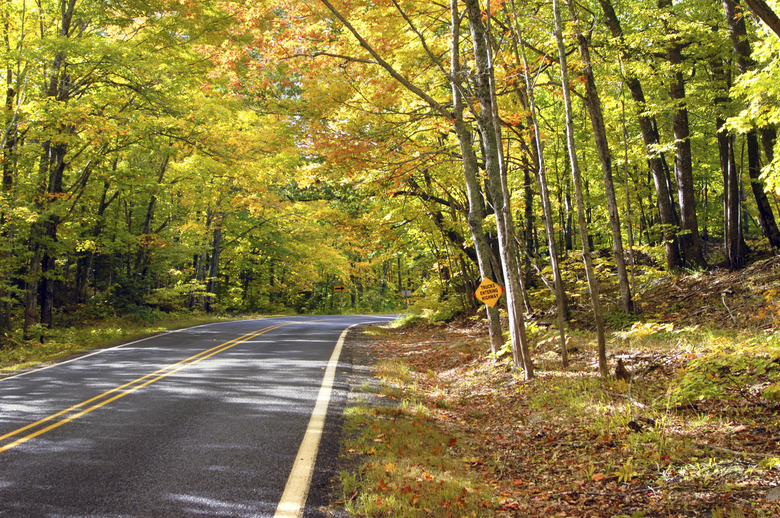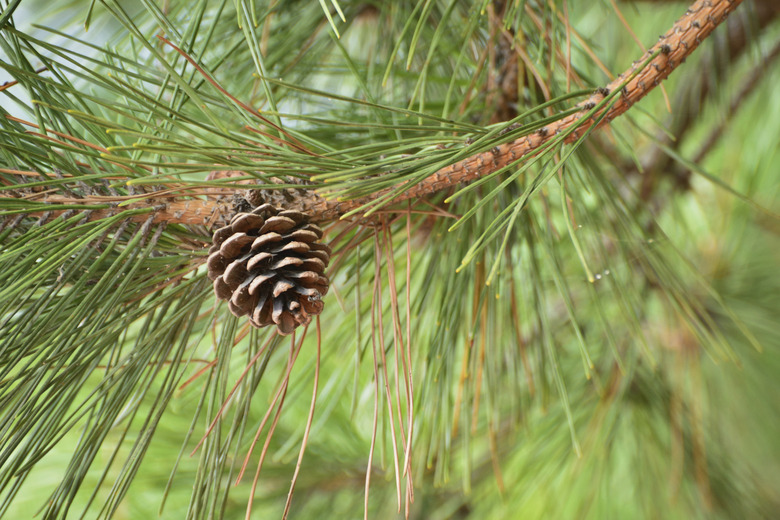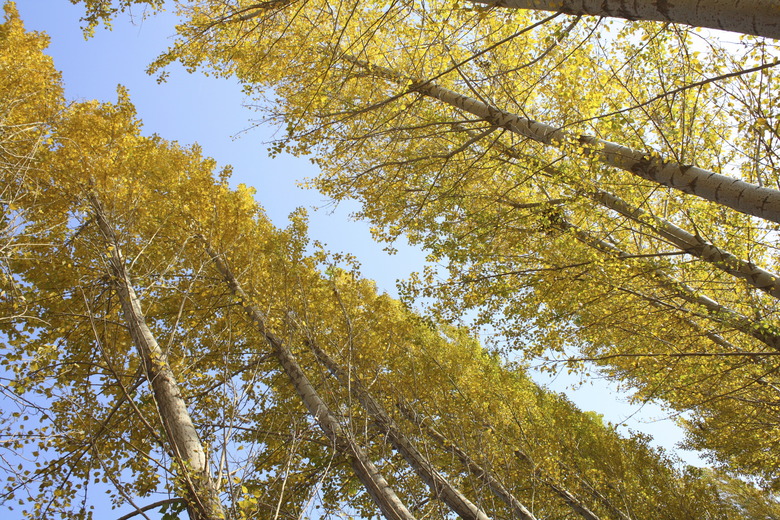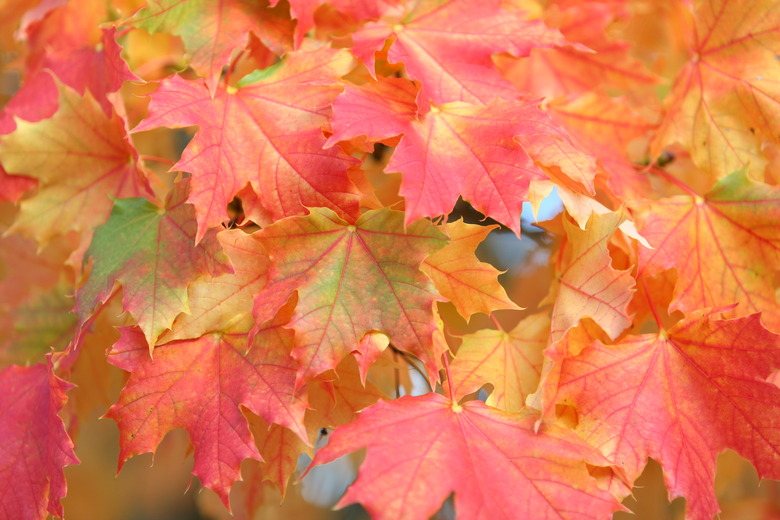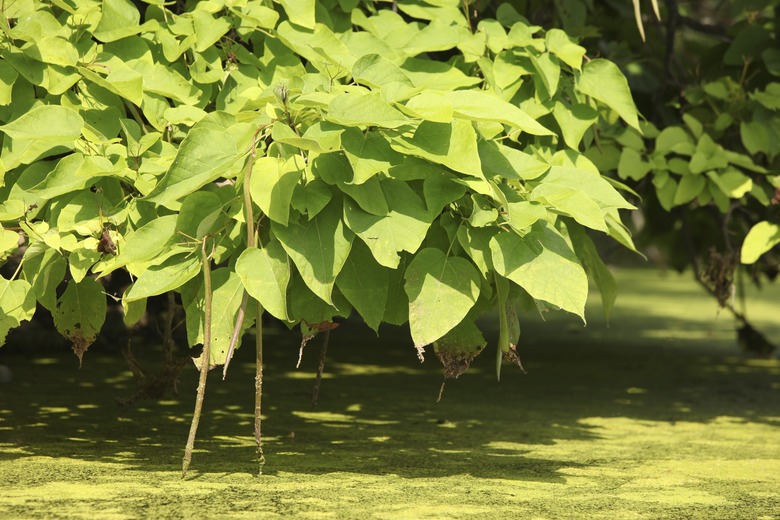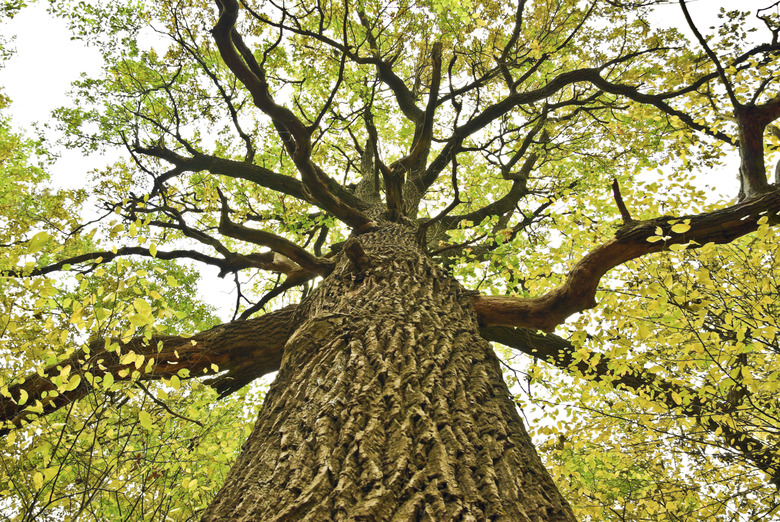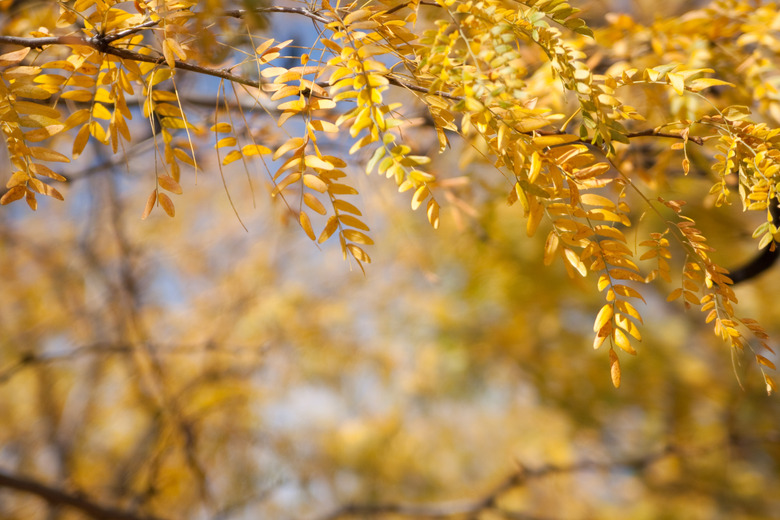Michigan Tree Leaf Identification Guide
Before settlement, Michigan was a heavily forested area, with broad expanses of deciduous and evergreen forests. Despite urbanization, about 50 percent of Michigan is still forested. Over 100 kinds of trees are native. You can identify deciduous trees in winter by their wood and buds and in summer by the shapes and sizes of their leaves. Use leaves from mature trees, since juvenile foliage can have different characteristics. To confirm identifications, look at a tree's bark, flowers, fruit and branching habits.
Evergreen Leaves
Identify conifer leaves at any time of the year, since the trees are evergreen. Conifers have leaves that are slender needles or flattened scales. Pine trees (Pinus spp.) have bundles of needles. White pine (Pinus strobus), growing in U.S. Department of Agriculture plant hardiness zones 3 through 8, has five needles per bundle and other Michigan pines have two needles per bundle. Jack pine (Pinus banksiana), hardy in USDA zones 2 through 7, and Scotch pine (Pinus sylvestris), hardy in USDA zones 2 through 8, have needles shorter than 2 inches. Growing in USDA zones 3 through 7, red pine (Pinus resinosa) has needles 3 to 4 inches long. If you find a conifer with flattened, scaly leaves, it's Northern white cedar (Thuja occidentalis), hardy in USDA zones 2 through 8.
- Before settlement, Michigan was a heavily forested area, with broad expanses of deciduous and evergreen forests.
- White pine (Pinus strobus), growing in U.S. Department of Agriculture plant hardiness zones 3 through 8, has five needles per bundle and other Michigan pines have two needles per bundle.
Triangular Leaves
Aspens have triangular leaves that quake in the wind, giving a soothing sound to forest and garden. Trembling aspen (Populus tremuloides) has bright white bark and smooth-margined leaves. It is hardy in USDA zones 1 through 7. Bigtooth aspen (Populus grandidentata) leaves have silvery undersides and coarsely toothed margins. Growing 50 to 70 feet tall, it is hardy in USDA zones 3 through 5 or 6.
Palmate Leaves
When leaf lobes radiate out from the base of the plant to resemble a hand with outstretched fingers, it's called a palmate leaf. Some of fall's most spectacular red color comes from palmate sugar maple leaves (Acer saccharum). This 60- to 75-foot-tall tree grows in USDA zones 3 through 8. Another example is silver maple (Acer saccharinum) with silvery undersides on green summer leaves. Trees show yellow fall color, growing in USDA zones 3 through 9.
- Aspens have triangular leaves that quake in the wind, giving a soothing sound to forest and garden.
- Trees show yellow fall color, growing in USDA zones 3 through 9.
Heart-Shaped Leaves
Two large trees with heart-shaped leaves are northern catalpa (Catalpa speciosa) and American basswood (Tilia americana). Catalpa is hardy in USDA zones 4 through 8, bearing large clusters of showy white flowers in late spring. American basswood grows in USDA zones 3 through 8 with fragrant, yellow spring flowers. A smaller tree with pink flowers that appear before the leaves, redbud (Cercis canadensis, hardy in USDA zones 4 through 9) has heart-shaped leaves with young leaves often tinged with purple.
Lobed Leaves
Oak trees (Quercus spp.) have the leaf margins incised to form lobes of varying depths. The leaf margins can be smooth or have teeth toward the lobe ends. Michigan has five species of oak. An example of an oak leaf with smooth margins is white oak (Quercus alba), a tree of noble proportions hardy in USDA zones 3 through 9. The northern red oak (Quercus rubra), growing in USDA zones 3 through 8, has teeth on the lobes and delivers red fall color.
- Two large trees with heart-shaped leaves are northern catalpa (Catalpa speciosa) and American basswood (Tilia americana).
- The northern red oak (Quercus rubra), growing in USDA zones 3 through 8, has teeth on the lobes and delivers red fall color.
Compound Leaves
Some leaves are divided into numerous smaller leaflets, called pinnately compound leaves, that resemble a feather. Examples are honey locust (Gleditsia triacanthos) and American mountain ash (Sorbus americana, hardy in USDA zones 2 through 6). Honey locust contributes yellow fall leaf color in USDA zones 4 through 9. Wild trees possess sharp thorns. American mountain ash bears showy clusters of white spring flowers, red to yellow fall color and red berries.
References
- Missouri Botanical Garden: Pinus Strobus
- Plants for a Future: Pinus Banksiana — Lamb.
- Utah State University Cooperative Extension: Conifers for Utah
- Fine Gardening: Red Pine
- Arbor Day Foundation: Cottonwood (Poplar)
- Michigan State University Plant Encyclopedia: Populus Grandidentata
- Arbor Day Foundation: Maple, Sugar Acer Saccharum
